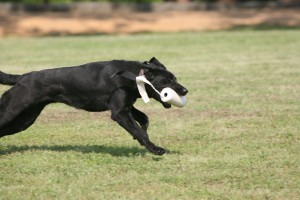After months of training and getting your dog ready, hunting season has finally arrived and it’s time to get on the road and out in the field. Before you set out, however, there’s a few things to keep in mind while traveling with your non-human hunting companion.
To crate or not to crate?
CRATE. Always. James Spencer of Gundog Magazine online wrote, “…when I see a dog loose in the back of a pickup, this is a disaster looking for a place to happen. Ditto for a dog loose inside a vehicle, where he can interfere with the driver and cause an accident, or become a flying object in case of an accident–or even dive out of an open window. No, when traveling, dogs should be crated, period.” Most hunter and trainers can agree that a dog not crated is simply dangerous.
Crates should be well-ventilated and large enough for your pup to stand up and turn around comfortably. A too large crate can be dangerous since it gives your dog more room to be thrown around in case of an accident or if you have to slam on the brakes. It’s also important to remember 1 crate, 1 dog. When traveling with your dog, your priorities should be safety and comfort. You’ve already put a lot into him, right? No use in getting lazy now. A crated dog will generally be happier, safer and easier to care for. Simply taking a few precautions can save your hunting buddy from being injured or worse while traveling.
Space: Making it and saving it.
Hunting dogs require space. A lot of it. When traveling to hunt there’s a lot of gear for both you and your dog. Start by making a bare bones list of things each of you will need. Mark Romanack shared his list of necessities in an article for Wildfowl Magazine online: “Each dog I travel with requires a basic list of gear. The essentials include a portable kennel, water and food dish, food container, water jug, neoprene vest, training collar/transmitter/battery charger, leash, dog treats, whistle, small plastic bags for picking up dog waste, first-aid kit and an old towel to dry the dog after water hunts.”
Although food and water may seem like an obvious addition to your list, when traveling there are a few key things to remember. Make sure you bring enough food for the entire trip. Changing your dog’s food can cause an upset stomach. Also, when dogs are hunting a lot throughout the day they will need extra food to sustain energy and replenish them after a hard day.
Pit stops and airing out your dog(s).
Just as you will need to stop to stretch your legs, rest, and eat, so will your dog(s). Airing out your dogs is imperative on long drives starting 1 hour after leaving, and then every 4 to 6 hours. When stopping at restaurants, gas stations and rest stops always park in a safe, well-lit spot. Don’t forget to make sure the doors are locked and your dogs will be well ventilated and protected from the weather while you’ll be inside. Remember heat is much more dangerous than colder temperatures.
Quick Travel Check List:
- Dog’s Hunting supplies and tool
- Records – In case of an emergency, you’ll need a record of your dog’s up-to-date shot records.
- Collars
- Carsickness preventative – some dogs can experience car sickness. In extreme cases a vet prescribed tranquilizer can be given to your dog on the day of travel. Cutting food intake on the day of travel can also help with car sickness.
- Your homes vet’s name and number
- Food and water for the whole trip
This list may not be every thing you need for travel, but it will serve as an excellent start when getting ready to travel with your dogs.
If you are traveling by air, the article “Air Travel With Your Retriever” on Ducks.org is a good resource of getting your dog and the airline to get you and your hunting dogs to and from your destination safely and securely.
For more tips and tricks for traveling this hunting season, here’s a list of articles:
http://www.gundogmag.com/2010/09/23/training_gd_travelspaniels_0910/
http://www.gundogmag.com/2012/01/17/have-dog-will-travel-road-trips-with-your-dog/
http://www.ducks.org/hunting/retriever-training/air-travel-with-your-retriever


